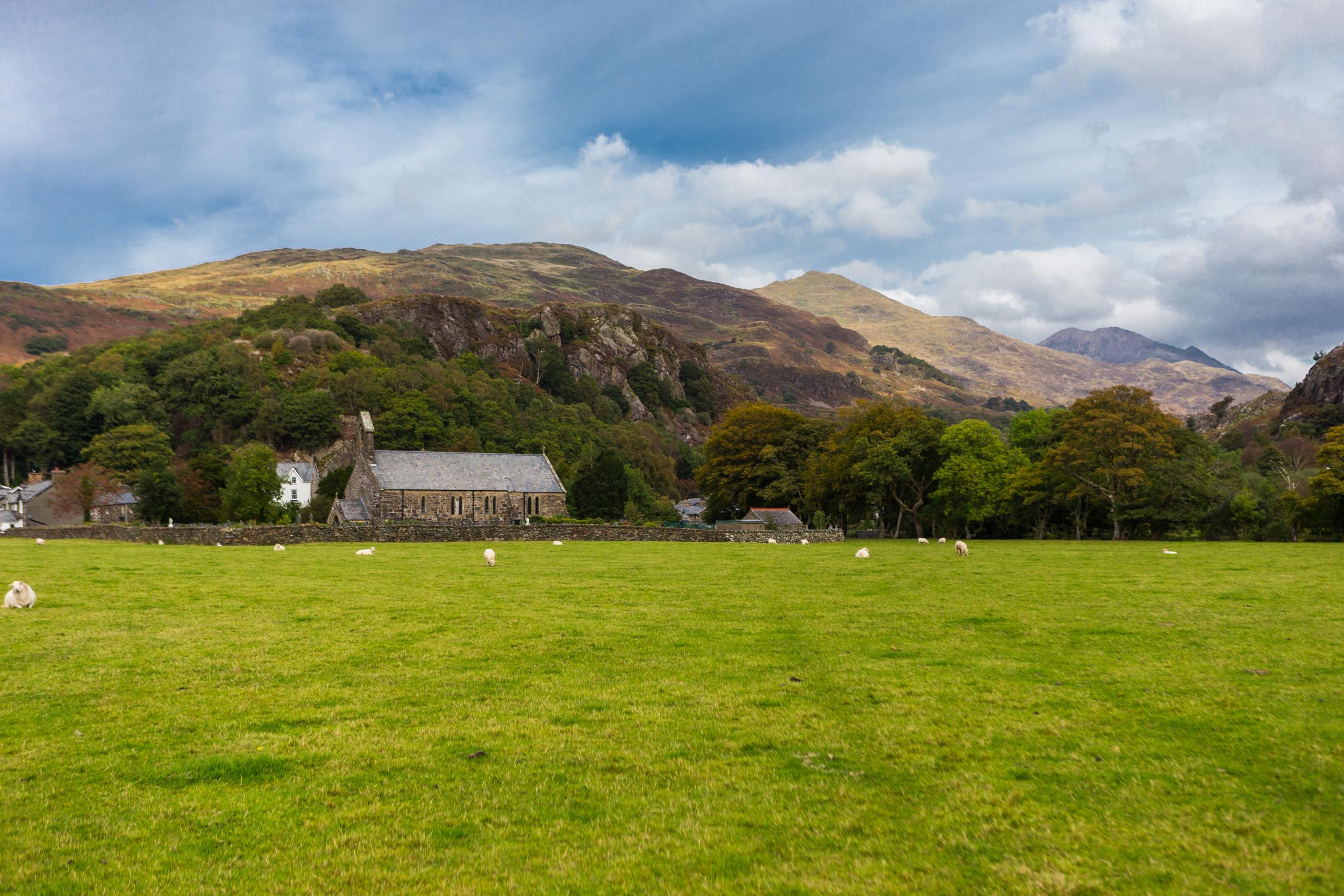St Peris
Nant Peris, Gwynedd
Founded by St Peris in the 6th century, with Snowdon and its neighbouring mountains towering above it on all sides.

A major tourist spot in Snowdonia with the Welsh highland Railway, Gelert’s Grave and the start of the Watkin Path up Snowdon.
Beddgelert, Gwynedd
This church was once part of an Augustinian priory. In the 16th century, King Henry VIII ordered the dissolution of monasteries and the building became the main church of a parish which covered a large chunk of Snowdonia, including the summit of Snowdon!
It’s thought that a Celtic clas (religious settlement) was established here in the 7th century. It was still an independent community when the monk chronicler Gerallt Gymro (Giraldus Cambrensis) visited c.1216. Shortly after his visit, the church was rebuilt for its new role as a priory church under the patronage of Prince Llywelyn Fawr (Llywelyn the Great), who is associated with the legend of the dog Gelert.
The priory was damaged by fire more than once. According to the Monastic Wales website, legal action was taken against the priory in 1350 for failing to pay contributions to the royal bailiffs. The prior argued that Prince Llywelyn ap Gruffudd had exempted the community in 1272 but the charter produced as evidence was found to be a forgery. The prior was briefly imprisoned. A later prior was outlawed for supporting the rebellion of Owain Glyndŵr in the early 15th century.
The church was restored twice in the 19th century but much of the medieval masonry survives, including some which probably predates the rebuilding of around 1220 to 1230.
Memorials you can see inside include an oak panel commemorating Evan Lloyd (d1678). He was High Sheriff of Caernarvonshire and lived in a large house called Hafod Lwyfog, at the far end of Llyn Gwynant.
Nant Peris, Gwynedd
Founded by St Peris in the 6th century, with Snowdon and its neighbouring mountains towering above it on all sides.
Llandecwyn, Gwynedd
The church with magnificent views of Snowdonia and Cardigan Bay.
Dolwyddelan, Clwyd
A small church at Gwyddelan’s preaching spot was replaced in the early 12th century by a new stone church.